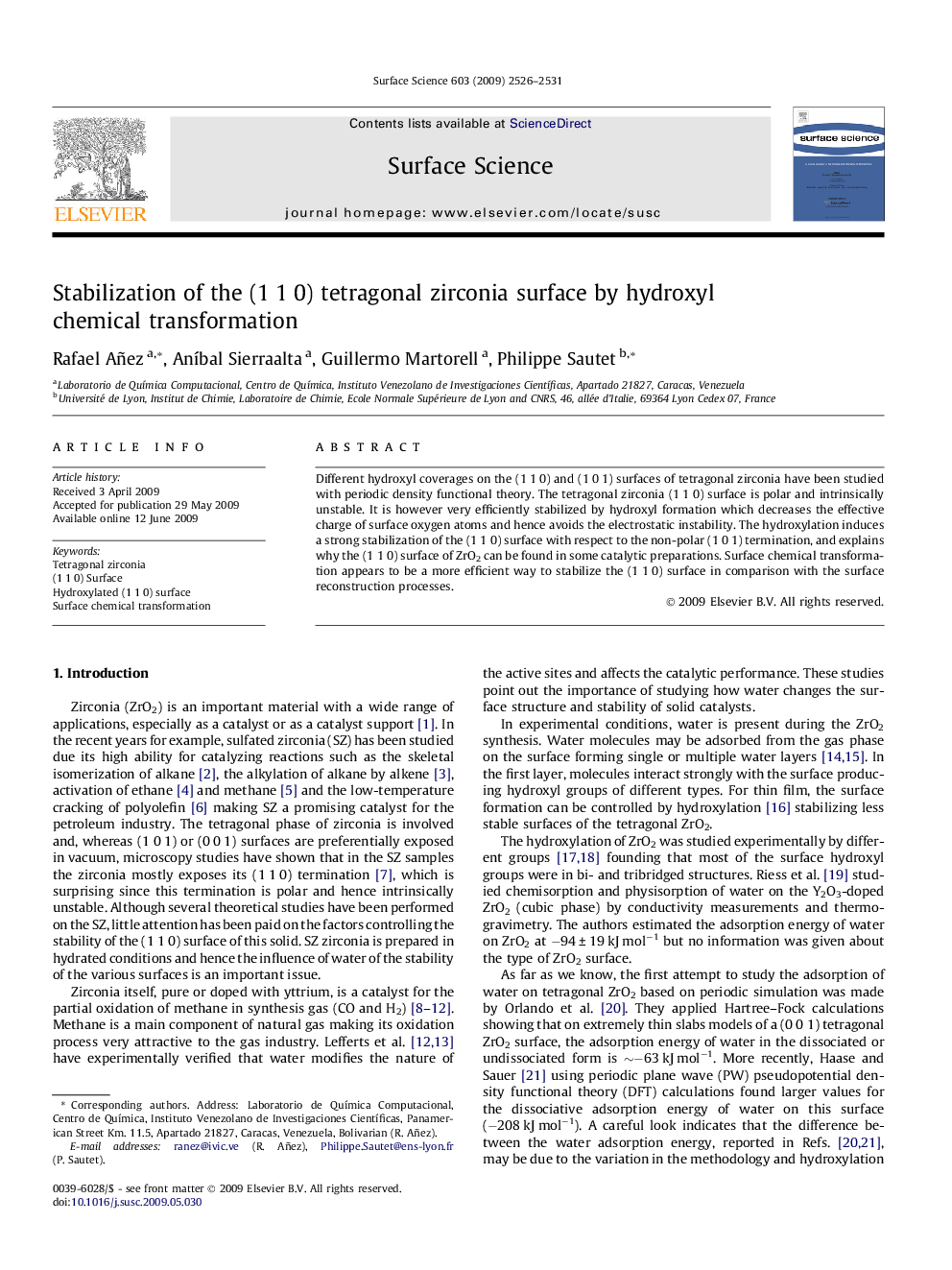| Article ID | Journal | Published Year | Pages | File Type |
|---|---|---|---|---|
| 5423779 | Surface Science | 2009 | 6 Pages |
Different hydroxyl coverages on the (1Â 1Â 0) and (1Â 0Â 1) surfaces of tetragonal zirconia have been studied with periodic density functional theory. The tetragonal zirconia (1Â 1Â 0) surface is polar and intrinsically unstable. It is however very efficiently stabilized by hydroxyl formation which decreases the effective charge of surface oxygen atoms and hence avoids the electrostatic instability. The hydroxylation induces a strong stabilization of the (1Â 1Â 0) surface with respect to the non-polar (1Â 0Â 1) termination, and explains why the (1Â 1Â 0) surface of ZrO2 can be found in some catalytic preparations. Surface chemical transformation appears to be a more efficient way to stabilize the (1Â 1Â 0) surface in comparison with the surface reconstruction processes.
